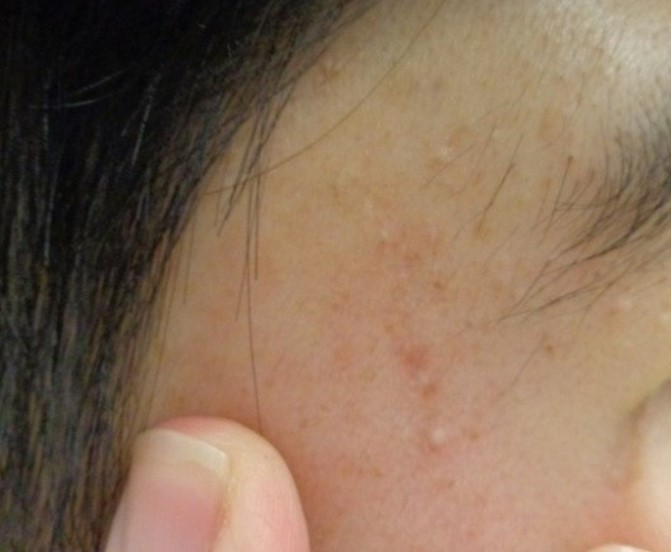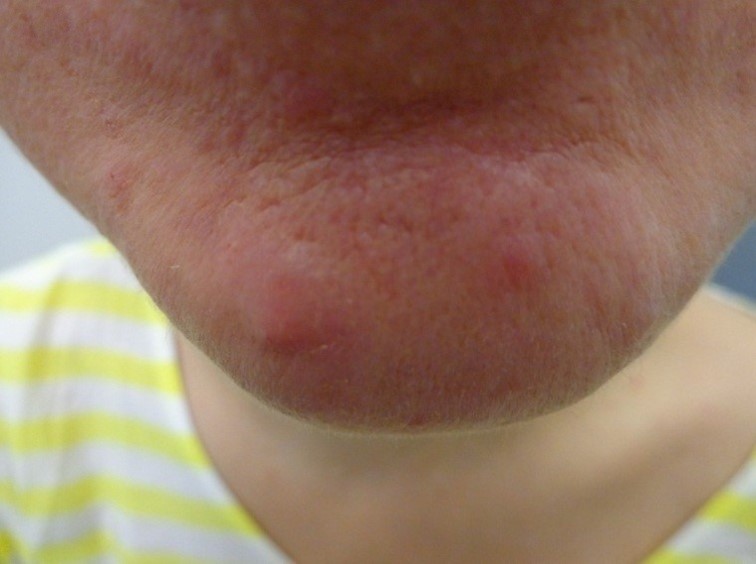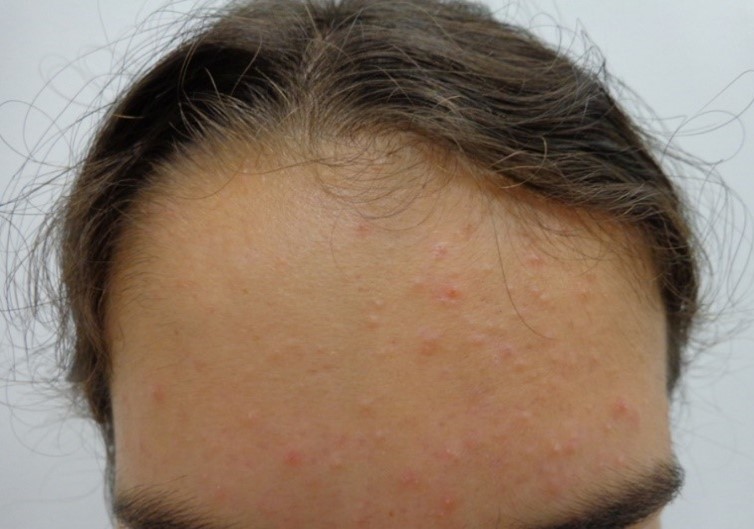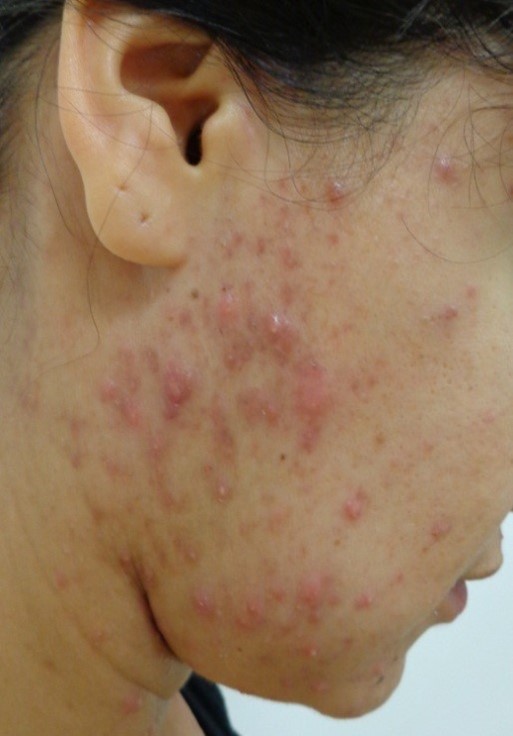Last updated: August 2023
Also known as: Acne, pimples, zits, spots
What is acne vulgaris?
Acne is a very common skin condition that usually begins in adolescence. The hair follicle and its associated oil (sebaceous) gland become blocked and inflamed. Whiteheads, blackheads, pimples and inflamed pus-filled spots (pustules, nodules, cysts) develop on the face, neck, back and chest, where oil glands are largest and most active.
Acne can impact an individual’s social and psychological functioning.
Who gets acne vulgaris?
Acne can affect all genders and all races. Acne mainly affects adolescents, particularly those aged 16 to 18 years, but can also impact infants, children and adults.
What causes acne vulgaris?
Several factors may cause acne, including:
- Increased sebum production
- Inflammation
- Increased acne bacteria
- Cell build-up (abnormal keratinisation)
There are also other factors that may trigger acne, including hormonal changes, genetics, stress, diet, occupation and being overweight.
What does acne vulgaris look like?
Acne mostly occurs on the face, chest, and trunk. Many different types of acne spots can occur, often at the same time.
Whiteheads are small, often tiny, non-inflamed spots under the skin surface while blackheads appear as an open pore with a black plug.
Whiteheads and blackheads are usually the first lesions that develop and may, but not always, be followed by the development of red lumps and pustules.
If the acne becomes more inflamed, larger, redder, deeper and more tender nodules or cysts may develop. These very inflamed lesions often lead to scarring.
Some drug reactions may result in many small pustules developing on the face and trunk. These reactions are sometimes described as “acneiform drug eruptions”. These can be distinguished from acne because of the absence of comedones (blackheads or whiteheads).

Figure 1. Whiteheads – Image reproduced with permission of Dr Jo-Ann See

Figure 2. Blackheads – Image reproduced with permission of Dr Jo-Ann See

Figure 3. Chin acne – Image reproduced with permission of Dr Jo-Ann See

Figure 4. Mild adolescent acne – Image reproduced with permission of Dr Jo-Ann See

Figure 5. Hormonal acne – Image reproduced with permission of Dr Jo-Ann See
How is acne vulgaris diagnosed?
Acne is diagnosed clinically by the presence of blackheads, whiteheads, red bumps (papules) and pustules on the face, chest or back where large numbers of oil glands are found in teenagers and young adults. It can also coexist with other skin disorders, such as rosacea, seborrheic dermatitis and folliculitis.
Sometimes acne does not develop until late adolescence, or early adulthood.
How is acne vulgaris treated?
Treatment options will vary depending on the individual and their needs.
There are many safe and effective acne treatments available. However, it takes patience and persistence to see improvement in acne regardless of the treatment method.
The aim of treatment is to:
- Reduce the number of acne lesions, such as blackheads and whiteheads.
- Reduce the inflammation (pimples and red bumps).
- Reduce redness and hyperpigmentation.
- Prevent scarring.
- Improve psychological wellbeing.
General measures for acne treatment include:
- Avoid applying oils or cosmetics to acne prone areas.
- Avoid abrasive treatments. Wash acne prone areas twice daily with an acne cleanser.
- Avoid squeezing and picking pimples.
- Consider a well-balanced, low-glycaemic index, high-protein and low-dairy diet.
- Apply an SPF30 or higher, broad-spectrum, oil-free, and water-resistant sunscreen.
Other treatment options for acne may include:
- Over-the-counter topical treatments, such as niacinamide, benzoyl peroxide, azelaic acid, salicylic acid and glycolic acid.
- Topical treatments with a prescription, such as antibiotics and retinoids
- Oral treatments with a prescription, such as antibiotics, oral contraceptive pill, anti-androgens, and isotretinoin.
- Physical treatments, such as lights and lasers, cryotherapy, chemical peels, and steroid injections into larger nodules and cysts.
What is the likely outcome of acne vulgaris?
Acne is often characterised by flare-ups and acne-free periods. This may continue for several years but can usually be suppressed with treatment.
In most cases, acne disappears after adolescence. Some people with a family history of difficult acne or those associated with hormonal flare-ups may continue to have acne into adulthood. In severe acne, scarring can develop because of deeper, more severe inflammation, nodules, and cysts.
| Dr JoAnn See | August 2023 |
| Dr JoAnn See | August 2015 |
Disclaimer
2019 © Australasian College of Dermatologists.
You may use for personal use only. Please refer to our disclaimer.